Reviews
Cet obscur objet du désir / Ese oscuro objeto del deseo
Luis Buñuel
France, Spain, 1977
Credits
Review by Daniel Loria
Posted on 16 May 2012
Source The Criterion Collection DVD
Categories Favorites: Transformations
Jean Luc Godard opens Contempt by misattributing a quote to Andre Bazin, “The cinema substitutes for our gaze a world more in harmony with our desires.” Its inclusion always struck me as odd, not only because Bazin never wrote that, but because the epigraph fits uncomfortably into the film. Looking back on it, the quote is closer to the experience of seeing That Obscure Object of Desire, the aptly-titled final film in Luis Buñuel’s illustrious career.
Buñuel and his long-time collaborator, screenwriter Jean-Claude Carrierre, decided to adapt Pierre Louys’ novel, “La femme et le pantin,” despite the material having been adapted to film on four previous occasions. Carriere and Buñuel set out to make and adaptation closer to the director’s own obsessions instead of feigning loyalty for the source material. Buñuel was attracted to the project by “The idea of a man who wants to sleep with a woman but never manages to… the story of an obsession that can never become a reality.”
The focus of the film was specifically aligned to be through the male perspective. The men in Buñuel’s cinema aren’t virile young matadors, they are buffoons: chauvinist, petit bourgeois, holding onto a crumbling aristocratic world by their fingernails—a world that has decided to change without them and leave them behind. Fernando Rey plays this archetype in That Obscure Object of Desire as Mathieu Faber, a wealthy flâneur with a short temper. Mathieu’s world is torn apart when he is overcome with an insatiable lust over his young maid, Conchita. Mathieu is reduced to a bumbling wreck, driven more by a desire to possess his young maid than to actually sleep with her. For Mathieu, Conchita is little more than a conquest; an innocent, virginal treasure—she is a fetish object on which he must reassert his place in a society he doesn’t wish to be a part of. Mathieu comes off, like many of Buñuel’s protagonists before him, as an anachronistic figure: completely irrational with his expectations of the people around him, at least twenty years behind in both his manners and mannerisms.
Buñuel’s heroines, however, have a tendency of refusing to be the women that men want them to be. They have a peculiar sort of narrative agency, initially presenting themselves as prey for older (and supposedly wiser) men before doing taking over the story by thinking and acting independently. Conchita consistently refuses Mathieu’s advances, depriving him the opportunity of sleeping with her via an assortment of humiliations… only to return and lead him on once again. It is never fully clear who is taking advantage of whom. Conchita initially seems to be susceptible to the seduction but it isn’t long before she makes it clear that she’s in control of the relationship as long as she keeps Mathieu from sleeping with her.
In The Devil is a Woman, Josef von Sternberg’s adaptation of the same novel, Marlene Dietrich plays the role with a dangerous aura; Dietrich’s Conchita is the type of woman who takes pleasure in ruining a man. That aspect is missing from Buñuel’s version, mostly because Conchita is depicted solely through Mathieu’s perspective; Mathieu contextualizes the film by providing the story through flashback narration, his confident indignation. Most notably, Buñuel cast the Spanish Angela Molina and the French Carole Bouquet in the role of Conchita, two women who don’t look or sound anything alike. The two women alternate scenes in the film haphazardly; while Molina’s fiery Conchita differs somewhat from Bouquet’s more sensual interpretation, their collaboration is more of a surrealist gesture than an attempt at implying a deeper meaning. We therefore see Conchita through Mathieu’s eyes: volatile, erratic, two completely different people occupying the same person. The transformation in this film is incidental on a physical level. Mathieu does not desire Conchita as a person, but obsesses over what her conquest represents to him. Unlike von Sternberg’s version, Buñuel’s Conchita isn’t vilified as much as Mathieu is ridiculed. The humiliations that Mathieu endures are always reactionary, her response to his paternalistic behavior. Mathieu’s downfall is not caused by Conchita but by his desire for her. Her sexual rejection fuels this obsession, preventing him from ever legitimately connecting with her.
This is familiar terrain for Buñuel. The frantic energy of Un Chien Andalou and L’Age d’Or derives from a lust that never appears to be reciprocal. Francisco, the insanely jealous husband in El, and Archibaldo, the psychopathic high-society man with a fetish for murdering women in The Criminal Life of Archibaldo de la Cruz, are equally driven by a material obsession for women. The women in Buñuel’s cinema, however, exist independently from what men want or imagine them to be. They have a peculiar sort of narrative agency, simultaneously coming off as subservient and independent.
The young novice, Virdiana is sexually exploited by nearly every male in the film—her charity is obscured by the temptation of her virginity. Ultimately, however, her choice of suitor is her own, even if it’s a resigned decision that follows a couple of attempted rapes. Celestine in Diary of a Chambermaid begins the film acquiescing to her employer’s shoe fetish and ends it happily married away from the domestic chores of the estate, a decision she comes to only after using intimate moments to unmask a child molester. In Tristana, a sort of thematic prequel to That Obscure Object of Desire, Catherine Deneuve’s title character allows Don Lope (Fernando Rey in a character practically identical to Mathieu) to make advances on her before abandoning him for a younger, more attractive man. When she returns to the patriarch’s home, she does so strictly on her own terms and belittles Don Lope in his final days. Don Lope dies, ruined and alone, not because of Tristana’s rejection but because of her indifference. The clearest example, however, comes in Belle de Jour. The attractive, successful bourgeois doctor is perplexed why his wife, Severine, refuses to sleep with him. What you don’t know can’t hurt you; he becomes catatonic as soon as he learns of his wife’s day job at a local brothel. The scandalous “horror” of Belle de Jour, from a male perspective, is the transformation of the good doctor’s wife into a whore who would rather sleep with fat Chinese men and petty gangsters. Never mind the fact that Severine’s character has always had these desires, or that her husband never bothered to discover them, his entire world is destroyed as soon as he is faced with the fact that his wife is not the person he expects her to be.
By discarding the tired trope of the femme fatale, Buñuel’s films are able to delve deeper into the idea of male insecurity. Other filmmakers have explored this space to equal effect. That Obscure Object of Desire mirrors Vertigo’s storyline quite closely, the main departure being that in Hitchcock’s film one woman plays two roles. But just as is the case with Buñuel’s film, Hitchcock decides to spend less time moralizing on the woman’s deception and turn the attention to whatever the hell is going on in Scottie’s head. Scottie’s obsession is so intoxicating that it becomes directly responsible for his downfall. The film shows a man whose fears have been exposed, a man broken physically and psychologically, but the MacGuffin here lies in the assumption that Scottie is trying to overcome his fear of heights. This is a red herring, as what Scottie is actually recovering from is a bad break-up; he can’t come to terms with the fact that the woman he fell in love with was not the person he expected. Scottie and Mathieu both pursue a woman that comes in two; their obsession isn’t centered on the woman, but on the desire she (they) is able to elicit from them.
Lost Highway, Open Your Eyes, and Eyes Wide Shut are other variations of this theme, similarly depicted in films that resemble lucid dreams. The men in these films are totally unable to rationalize their failure to understand the women in their lives, a crisis that plunges them into the self-destructive depths of obsession. In Kubrick’s film, Bill is floored by his wife’s confession of sexually desiring another man. He stumbles around New York in a stupor, leaving the cocktail parties and galas by slipping into a macabre carnival-themed orgy thrown by billionaires. Bill’s insecurities are unmasked, privately by his wife and publicly at the orgy. The protagonists in Lost Highway and Open Your Eyes create alternate realities for themselves as they struggle to cope with the realization that the woman they love is no longer there. All of these men escape a world they can no longer handle; these are essentially films about weak men in a search to regain their identity after losing the woman they love. Like in That Obscure Object of Desire, the physical transformation occurs in the women - the characters played by Patricia Arquette in Lost Highway and Penelope Cruz in Open Your Eyes is substituted to the men’s notion of the “perfect woman” by the second half of the film. The women become one-dimensional sex puppets—not unlike the statuesque, faceless models Bill encounters at the Eyes Wide Shut orgy. The actual transformation in all the films I’ve mentioned comes from the men themselves. Self-assured, successful, confident—their own ego is responsible for the delusion that eventually ruins them.
Like his protagonists, Buñuel was a man that never felt comfortable in the world he lived in. Born in 1900, he lived through every major war of the 20th Century. He was forced to leave Spain and the United States for political reasons, settling down in Mexico - a country he never seemed to like very much - mostly out of convenience. He wasn’t a man from a different era; he was a man from several different eras ago, consistently being faced with a world that would grant freedoms just easily as it would persecute those who enjoyed them. Near the end of his life he became increasingly concerned with the threat of terrorism. The surrealist call for random acts of violence that seemed so subversive in the 1920s started to become a frightening reality. Scenes with terrorists began to emerge in his later films. By That Obscure Object of Desire terrorism became a central part of the plot. Well, maybe not central, Mathieu is so blinded by his pursuit of Conchita that he barely notices the escalating violence around him. The film ends awkwardly, with a random explosion in a Parisian shopping district that kills both characters. Watching the film again I’m reminded of that epigraph, “The cinema substitutes for our gaze a world more in harmony with our desires,” and it’s hard to deny with a film like this. The last shot of Buñuel’s career is a gulf of flames that invade the screen. Incendiary from the first sequence he ever directed, Buñuel’s films are as close as cinema has ever gotten to recreating the explosive power of desire.
More Favorites: Transformations
-
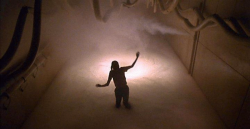
Altered States
1980 -
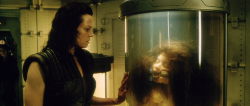
Alien: Resurrection
1997 -
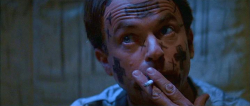
In the Mouth of Madness
1994 -
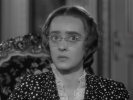
Now, Voyager
1942 -

Honey, I Shrunk the Kids
1989 -
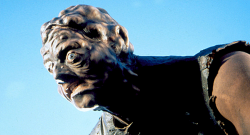
The Toxic Avenger
1984 -
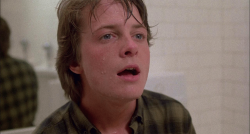
Teen Wolf
1985 -

Teen Wolf Too
1987 -
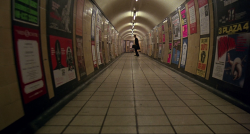
An American Werewolf in London
1981 -
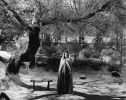
The Curse of the Cat People
1944 -
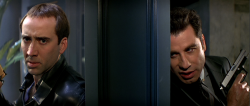
Face/Off
1997 -
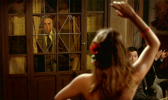
That Obscure Object of Desire
1977 -
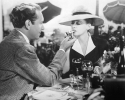
Now, Voyager
1942 -
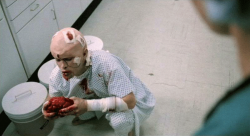
From Beyond
1986 -
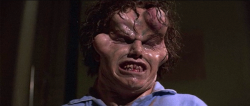
The Beast Within
1982 -
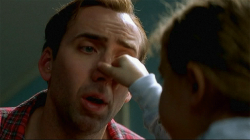
The Family Man
2000 -
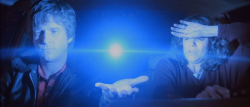
Starman
1984
We don’t do comments anymore, but you may contact us here or find us on Twitter or Facebook.



